originally posted at https://canmom.tumblr.com/post/663780...
Good evening jizz-wailers! It’s time for Animation Night!
The occasion for tonight is the release of a certain project of old Darth Walt’s evil empire - essentially an attempt to copy the Animatrix formula by throwing a bunch of money at some of the best known anime studios and directors to produce a short film anthology for the Star Wars franchise.
With the Wachowskis, that was because they are big weebs who personally love anime and, having made a successful movie, had the opportunity to work with some of their objects of fandom. With Disney on the other hand, it’s nakedly because they’ve noticed anime is making a lot of money (for everyone but the actual animators who make it) and want a slice of the pie.
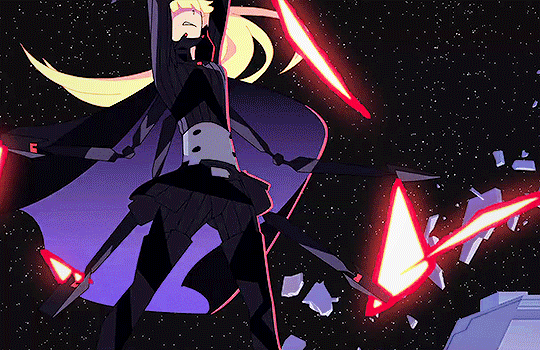
So this is an utterly cynical bit of showbiz capitalism but whatever, I like anime short films and if nothing else, this is a chance for great studios like Science Saru and Trigger (with Imaishi himself directing no less) to make something goofy and shortform. So yeah let’s fly the ‘copyright strike’ run in less than twelve parsecs and check this stuff out.
So, Star Wars. Nowadays it’s inescapable, but to begin with, it was the project of a fairly minor director with a couple of successful, somewhat more arthousey films like American Graffiti in the 70s attempting to update the format of the Republic serial. A serial was a kind of weekly film series popular in the 30s and 40s (pre-TV) that would be watched at a theatre; often these would be Westerns or sci-fi stories such as Flash Gordon, and they had a pretty strict formula with cliffhangers at the end of each week; the company Republic seems to have further specialised in superhero stories and special effects shots in shows like King of the Rocket Men. For Lucas, the particular one he wanted was Flash Gordon, but he could not get the rights, and resolved to tell his own story.
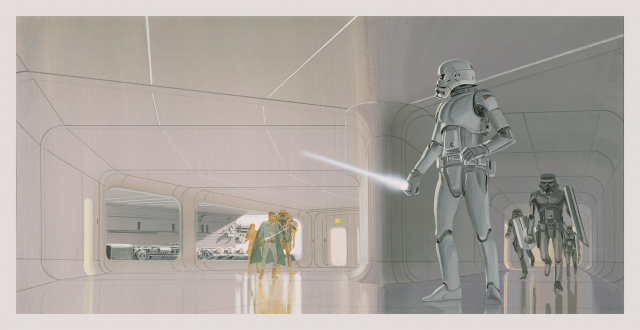
Star Wars was fully expected to be a small release, and perhaps the props could go ahead and be used to make a TV show and wring a bit more money out before it was done. Instead it somehow became one of the first mega-franchises; rapidly its potential to flog toys to children was recognised and new films were greenlit.
So why was it so successful? We can’t really give a definite answer for which ingredients were essential and which were dispensable. But my best guess is that it has a lot to do with the series’s at the time startlingly strong sense of visual design.
The 70s were a time of extensive aesthetic experimentation (c.f. @70sscifiart), before the genre conventions of 'fantasy’ and 'sci-fi’ would get nailed down the way they have today. We saw this a bit in the case of films like Bakshi’s Wizards (Animation Night 63), and 70s anime like Galaxy Express 999 (Animation Night 62). A lot of this was fed by a lavish fantasy painting scene; you may well know the name of e.g. Frank Frazetta. Alongside that there were comics, then just leaving their ’silver age’ and still vastly more popular than they are today (when thanks to a whole series of incomprehensibly terrible business decisions, comics have been reduced to an appendage being bled dry by the film industry).
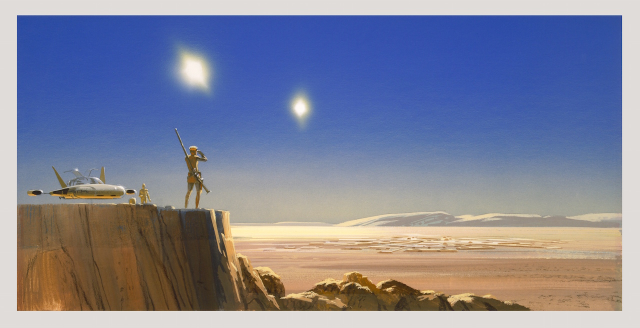
So one of Lucas’s major inspirations for the look of his new film was the paintings of Ralph McQuarrie (examples in a rather marketing-hagiographic article); the story seems to be that Lucas approached McQuarrie and asked him to work together on a film titled The Star Wars, and McQuarrie did a great deal to define both the striking shapes of the costumes and the particular uses of texture and lighting that the film would make iconic. Along with Alien, McQuarrie is credited with creating the idea of a 'used future’ with realistic grime.
But Lucas had a more specific stroke of luck: shortly prior to his effort to shoot a new sci-fi film, the Jodorowsky Dune project that we discussed two weeks ago on Animation Night 71 collapsed, leaving a lot of talented French comics artists in want of new work in film. Among them, Dan O'Bannon was left homeless and dependent on his friends; he would go on to create the CG interfaces in both Star Wars and Alien. I’m having trouble finding the names of other artists who went directly to work on Star Wars (as opposed to Alien which scooped up most of the Dune crew including Giger and Moebius), so perhaps the influence was more indirect:
[French documentary Jodorowsky’s Dune] notes that Jodorowsky’s script, extensive storyboards, and concept art were sent to all major film studios, and argues that these influenced and inspired later film productions, including Star Wars, the Alien series, Flash Gordon, the Terminator series, and The Fifth Element.[5][6]
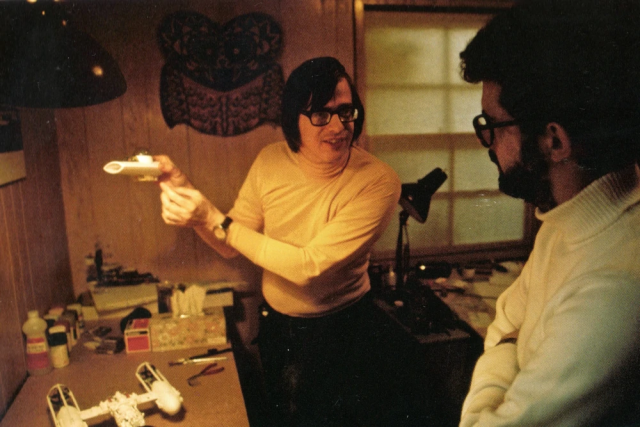
Other artists who made major contributions include Colin Cantwell (pictured here in an extremely 70s outfit) who designed the ship’s spaceships, which are one of the strongest elements: a fantastic sense of shape and design balance between large shapes and greebled texture. (Perhaps it’s not going to be a surprise that I loved the Star Wars Incredible Cross-Sections series as a kid.)
So the situation was perhaps ripe for someone to take all these stark aesthetic concepts and turn them into a film. Cue a summer of gluing battleships together in Tunisia to make greebled surfaces and all of that other stuff you can read about on the wiki.
As a standalone film, with no premonition of what is to come, Star Wars has a lot of good qualities. Its story is maybe a simple pastiche of samurai movies like Hidden Fortress by way of World War II with a sci-fi veneer and a paper thin new-agey spiritualism, but all those creative designs and lived-in settings do a lot to gesture in the direction of an expansive, strange universe.
So when Alec Guinness turned his Shakespearian voice on mentioning the 'Clone Wars’, you don’t need to know who the clones were or what they were fighting about: the allusion adds texture to the setting and works best as a tantalising hint. George Lucas’s wife at the time, Marcia Lucas, gave it a fantastic edit which did a lot to elevate the film’s weaker writing decisions (as we can see after she divorced Lucas and he started making changes). As simple as it is, the story has enough support to carry us through the locations and setpieces; if this were a toku film I’d be more than happy.
Then they made a bajillion dollars and it went to their heads.
The next two films don’t exactly drop the ball, and continue to deliver strong visual setpieces and a functional story about family drama played out over a large scale war, though you can see the spectre of 'we can sell so much shit to kids’ coming in with characters like the Ewoks in movie 3. Following that, Lucasfilm started something that was at the time quite novel: an 'expanded universe’ of linked books, comics, games etc. which allegedly would come together to make a much grander story. (Starting with projects like the infamous Star Wars Holiday Special.)
And the movies? Well, unfortunately, they started to be treated as…
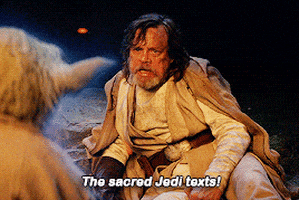
Every single line and visual setpiece started to take on an 'undue reverence’. Entire fan subcultures formed around arguing over Lucas’s changes in the re-release, like a fraction-of-a-second flash of light that allegedly compromises Han Solo’s entire character. Within the now sprawling and contradictory 'expanded universe’, a bizarre 'canon hierarchy’ was fashioned in which Lucas’s films were authoritative, and everything else on a series of rungs beneath it.
Especially in the 90s, the Expanded Universe grew and grew; writers desperate for material took each minor character to appear and attempted to flesh it out so that their behaviour on screen is somehow representative of the paradigmatic behaviour of their race. Chewbacca isn’t just a big hairy guy with a funny voice: there’s a species who are all just like him and they’re all bad losers and they love swearing life debts to random humans etc. etc. Even minor extras in the film, like the ice cream maker guy, were given names, backstories and their own comics, each one devotedly imitating the canonical emotional moments of the original films. As some sort of spectacle of modern capitalist entertainment ouroboros you couldn’t ask for much better!
Some of those Expanded Universe creations became popular enough to get a kind of esteemed status as near-to-canon. Timothy Zahn’s scheming space admiral Grandmaster Thrawn was popularised by a series of novels. A minor villain, the bounty hunter Boba Fett, had such a striking design that he was expanded into a culture of “guys like Boba Fett” with a specific language and creed by author Karen Traviss, who would later have most of her ideas overwritten in the Clone Wars TV series, leading her to leave the franchise. The 'Old Republic’ setting defined by the Knights of the Old Republic game series became quite popular in its own right.
Meanwhile, in the early 2000s, Lucas decided to make a prequel trilogy about the rise of the fascist Empire from a liberal democratic Republic, in part as a special effects showcase leaning heavily on new developments in chromakey compositing and CGI. The result was a set of movies which made their own massive impact (with the early internet ready to make them into memes) even though the near universal consensus opinion is that they are terribly written and acted 'bad movies’.
Perhaps the major reason for this was the ongoing commitment to novel visual design and concept art driven setpieces; as tedious as the racing segment of A Phantom Menace was considered by many viewers, 'high tech rocket chariots’ is a fantastic concept and definitely captured the imagination of the kids who went to see it like an eight year old Bryn Canmom. Naturally, this could equally go in quite terrible directions, like the incomprehensible decision to include a minstrel character alien, or layer a slave-owner character in an almost parodic amount of antisemitic signifiers. But I guess it’s not surprising for a descendent of French comics.
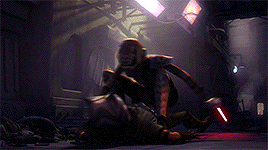
Following the prequel trilogy, Star Wars enjoyed a brief period of living primarily in animated TV shows. This began with Genndy Tartakovsky’s Clone Wars series (Animation Night 35), but this was overwritten by Lucas’s decision to make a CGI TV series with Dave Filoni. Star Wars: The Clone Wars began by rather mechanically imitating the formula of the Republic serials with its opening narration and battle-focused storytelling formula, and if that is all it managed it would be worthless. As Lucas drifted away and Filoni became the primary director, The Clone Wars managed to escape that start and come into its own, managing to deliver some reasonably compelling dark dramatic storylines like Darkness on Umbara and The Wrong Jedi, and a lot of absolutely off the wall goofy stupid shit, which is to be honest one of the most valuable parts of Star Wars.
Then in 2012, the Mouse came to swallow it up as part of its acquisitions spree. The new overlords were not going to let their new franchise sit cold; they quickly announced a new movie trilogy and a followup animated series with Filoni, while officially discarding basically the entire Expanded Universe to start over.
Disney’s take on Star Wars is, well, very corporate, and excruciatingly conscious of its status as a fandom-generating machine at all times. All the weird goofy parts of the Expanded Universe had no further place in the new order. The goal, especially in the hands of Abrams, was to devotedly recreate the general arc and aesthetic of the original trilogy.
At first this approach felt like it could have some merit - seeing the visual language of the Empire and Rebels come back in the first spate of Disney Star Wars movies (especially near-immediate prequel Rogue One) seemed refreshing, and they made some great casting decisions like John Boyega of Attack the Block as a Stormtrooper defector which seemed to have a lot of potential. The film was basically a retread of the first Star Wars with a larger CGI scale, but it had a certain sense of fun 'oh we’re doing Star Wars again!’ enthusiasm as Abrams did his usual mystery-box plotting.
It would not last.
Rian Johnson’s second movie attempted to take some small risks with the franchise, trying to deliver a rather muddled critique of its core premises, and tried to shoot down some of the tedious mysteries that Abrams’s film raised as unimportant; it was also one of the only films to deliver anything new visually. Unfortunately it also completely sabotaged John Boyega’s role - the first film was clearly setting him up to share the main character status, but the second film relegated him (and Kelly Marie Tran’s new character) to a distinctly secondary status, and refused to engage with any of the thematic potential he’d had in Abrams’s film. Meanwhile, the effort to shoot down the Rey/Kylo Ren ship bait from the first film backfired spectacularly.
The fans got upset for all the wrong reasons, and Disney apparently panicked and immediately brought Abrams back to overturn all of Johnson’s risk-taking decisions into a fascinatingly mechanical movie that seems to rush through every expected character moment at speedrun pace, and indeed when I saw it (don’t worry I didn’t spend money, my friend was going and she had a spare ticket ;p) it got the whole theatre laughing during what was supposed to be a climactic moment. So you end up with a movie trilogy that’s a completely muddled mess, ending on the most inane note possible. I honestly can’t think of anything more fitting.
However, Disney aren’t done with yet, not when there’s still money to be made. They found some success with streaming-targeted series The Mandalorian, which is by and large a rote space-Western/dadcore series mostly notable for its unusual production technique of filming in a box covered with screens showing real-time Unreal Engine renders of the environment, with the section behind the camera specifically reprojected to match its POV, which avoids some of the lighting and compositing issues of chromakey. Then the Mouse tried to announce about 50 more TV shows to capitalise on that success, only for one of them to almost immediately fall through when the lead actress got cancelled for too publicly being a far right conspiracy theorist. Such is entertainment media in 2021.
So instead I guess they went anime!
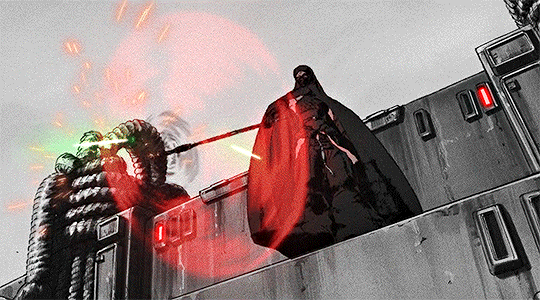
tThe studios tapped for Star Wars visions may well be familiar if you’ve been sticking with me all these animation nights. We have…
- Studio Colorido, whose major works we watched last week, with Tattooine Rhapsody dir. Taku Kimura with a musically themed one
- Studio Trigger, with Hiroyuki Imaishi (Animation Night 18 for Promare, Animation Night 30 for Gurren Lagann, and extensive animation in an episode of FLCL) himself directing The Twins which basically seems to be 'what if Lio Promare was a Jedi’. They have a second film, The Elder, directed by Masahiko Otsuka who also worked on FLCL and TTGL.
- Kinema Citrus, of Made in Abyss (Animation Night 45) and Revue Starlight, doing one of several 'Jedi as samurai’ shorts in The Village Bride dir. Hitoshi Haga
- Production I.G., renowned for many works including all the adaptations of Ghost in the Shell (Animation Night 39), with GitS:SAC director Kenji Kiyama giving us a story about a Jedi exile fighting off a bunch of assassins in The Ninth Jedi
- Science Saru, the studio of Masaaki Yuasa (Animation Night 12, Animation Night 28), bring two shorts: one a story about a droid trying to become a Jedi by one of their younger directors Abel Góngora, the second by Eunyoung Choi of Keep Your Hands Off Eizouken! fame telling another samurai type of story.
- Geno Studio, a member of the Twin Engine group alongside Colorido and Science Saru, bring Lop and Ochō about that rabbit Jedi you may have seen in pictures…
The general account is that it’s generally solid - necessarily mixed bag like any such multi-studio anthology, but I hear tell there are some fantastic shorts and excellen animation. So I’m looking forward to seeing what some people who still have some kind of distinctive aesthetic vision can do with Star Wars.

Since these nine episodes won’t be quite enough on their own to really flesh out an Animation Night, I’m also planning to show you some of the better standalone episodes of The Clone Wars (namely, the Darkness on Umbara arc), and any others by request (maybe one of the goofy bounty hunter ones or one with the fantastic pirate king Hondo, who has a great dynamic with the series’s rather more gay sarcastic take on Obi Wan). It’s been quite a long time since I watched these, so I hope they hold up as well as I remember them lol. I also have one of the less fondly remembered entries in Star Wars animated history - @mogsk has tracked down a copy of, well, the animated segment in the infamous Star Wars Holiday Special which I’m certainly curious to see.
Star Wars has managed to attain a kind of status where it kind of doesn’t matter whether you think well or poorly of it; like Marvel movies, its cultural saturation has reached the point where no matter what, if you’re even slightly interested in science fiction or film, you’ll see its imagery and hear people discuss its major plot points. But it at least has the decency to not look, in its past iterations anyway, as utterly bland and ugly as Marvel movies. I hope Star Wars dies and becomes a historical artefact to give everything else some breathing room, but while we have to contend with it, let’s see if we can wring some enjoyment from the machine :p
Animation Night 73 will be starting very soon! Head over to twitch.tv/canmom now and we’ll be live any minute, and starting films in 10-20 minutes probably…
Comments